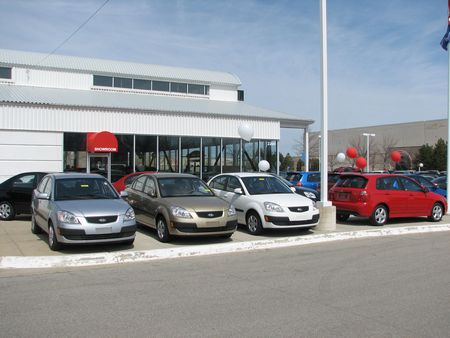Thursday 5 March 2009
Direct and Indirect Selling
This Blog was Designed to give information on methods of direct and indirect selling for businesses to use for their sales. It will show the advantages and disadvantages of the selling methods with examples for easy refrence.
Indirect Sales Methods
Description:
Indirect sales is where selling of goods or services is conducted through other businesses such as retail shops, wholesalers etc. who then sell the product to the consumer. The advantages of this method is that they can reach more people as the wholesalers and retail stores have contacts and already may have loyal customers who they can sell the product to ensuring that it reaches more people. The disadvantages are that it involves other people which can lead to problems.
Indirect Sales Methods
Wholesalers
These are the businesses who sell goods to the retail stores who then sell it to the public. It is therefore indirect for the producer because they sell it to the wholesaler who then sell it to the retail stores who then sell it to the final customer. The wholesaler normally buys large quantities from the producer to sell to the retail stores as they buy it in bulk.
These are the businesses who buy from the wholesalers or sometimes straight from the producer, then sell the product to the final customer. These retailers can be supermarkets, department stores, multiple stores, inderpendent retailers and consumer co-operatives. Retailers have also got brand loyalty from their current customers meaning that the producers of the products can reach more people.
Agents
These are businesses that sell goods on behalf of other people. One of the main examples are estate agents who sell houses on behalf of people. They have methods of selling which makes them desirable such as big advertising resources and a brand name which people trust.
Distrinbutors and Dealers
These are an independent agent who's entered into an agreement to offer and sell the product of another company but isn't entitled to use the manufacturer's name as part of its business name.
Sierra Coffee Estates
SCE sells indirectly to consumers through other businesses brands, for example Nestle- who buys their coffee beans from SCE then manufactures them for their own brand name. This branded coffee is then sold to consumers through supermarkets and retail outlets. Meaning that the final sale of the coffee is indirect from farm where SCE gets the coffee to the consumer who buys it from a shop like a supermarket. I think that this method offers many benefits to SCE as it gives them more customers as they reach a lot through supermarkets, and also customers who use the brand, which means more sales through brand loyalty to Nestle for example.
There are some elements of indirect sales Haart Estate Agents as they can advertise houses in papers and on websites which in a way leads to sales, but the actual sale is still done through the company as their product is not one which could be sold to wholesalers.
Sainsbury’s doesn’t sell their own brand products indirectly as they sell all of their goods in their own stores exclusively meaning that customers cannot buy their products anywhere else.
Monday 2 March 2009
Direct Sales Methods
Description:
Direct Selling is where the selling takes place directly from the producer to the consumer, not via other shops or businesses. This can be done through internet selling, or TV selling, postal sales, factory shops or catalogues. It does not involve middlemen such as wholesalers, retailers or brokers. Direct selling can offer advantages to the consumer such as lower prices which the internet is particularly useful for, and shopping from the comfort of your home. Some potential disadvantages are the minimal after sales service, not being able to physically see the product before purchase and it is harder to exchange or return goods.
Direct Sales Methods:
Personal Selling
Personal selling is selling directly to the customer straight from the business via verbal communication with the potential of a sale. There may be a relationship made between the customer and business to enable the sale to close.
Direct Mail
Direct mail is when people may be sent a catalogue through the post which may have an order form on the back, which the customer fills in telling the business what they want to order. Then this order form is sent back to the business and the goods are then sent to the customer.
TV sellingThis is when goods are sold to customers through TV channels, which shows the products to the customers, then they ring up a number to order the goods which they want.
Radio selling is when goods are sold over a radio station, where they are described through audio, then the customer will be given a contact number to ring so they can order the goods. This has been replaced now by TV sales, as radio sales is now quite rare.
The Internet is one of the main ways that people buy goods currently and has replaced many of the above methods of direct selling. There are millions of Internet shops and websites where customers can buy almost any good or service. It is the most popular form of direct selling now. Factory Shops
Factory Shops
These are shops which are in factory's where goods are manufactured, and used mainly by employees of the factory where they can buy the goods at normally a discounted rate.
Catalogues are used to show the products that a business sells to the customer, giving them a chance to see pictures and descriptions of the goods which they can then order through the business. An example of a business that uses this method is Argos, they sell everything through a big catalogue.
Sierra Coffee Estates
Sierra coffee estates sells directly to consumers through its own small brand of coffee and chocolate which is sold to people in the UK. It does this on a fairly small scale producing small profits. Their main source of income is from selling their products directly to the manufacturers and wholesalers of other coffee brands such as Nestle and Mars. These companies then use the SCE coffee beans to make their own brand coffee. This does lead to indirect sales to the brand’s customers as explained on the right. This method has benefits such as straight forward sales which are not complicated and don’t involve anyone else. It also gives direct profits.
Haart Estate Agents do a lot of direct selling straight to the customer from their branches all over the country. They sell houses on behalf of people who use their agency. Customers come into the office to enquire about houses on the market. The selling process of this kind is quite long meaning that there is a need for high sales skills to attain a sale. I think that they have to sell in this way because buying a house is a big decision for people so they want to look at it and carry out checks to see what they might buy suits their needs.
Sainsbury's PLC
Sainsbury’s sells a lot of products some of which are branded and some are their own personal brand. These goods are sold through their retail stores directly to the customers with the sale going directly to the business. Sainsbury’s acts as a seller for other businesses so that they can sell products through them indirectly to customers. Sainsbury’s sell their own brand products directly to customers as they produce and sell them in their stores. I think that this works well as it is simple and they can control the sale themselves. Sainsbury’s also sells their goods directly through the internet with a delivery service – sending goods to the customer on a date and time set by them for convenience.












